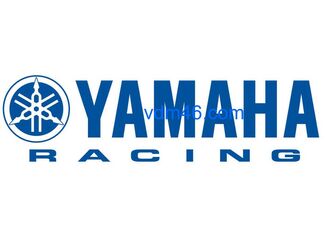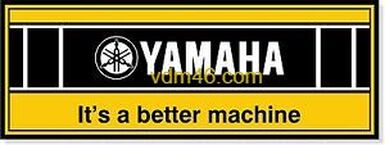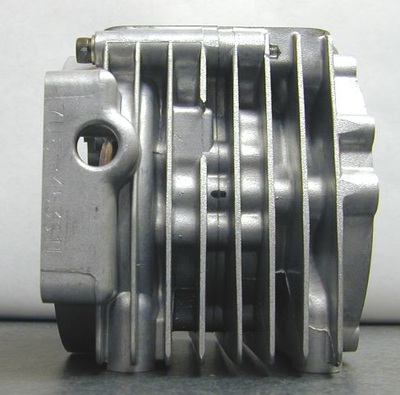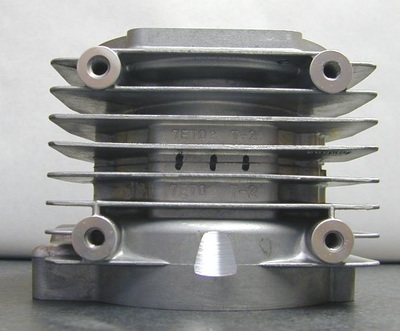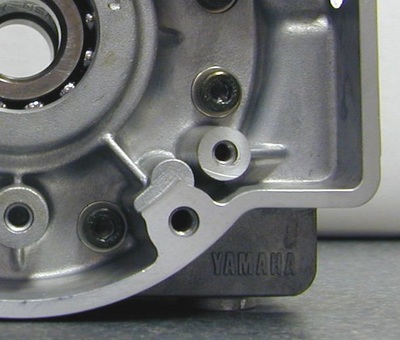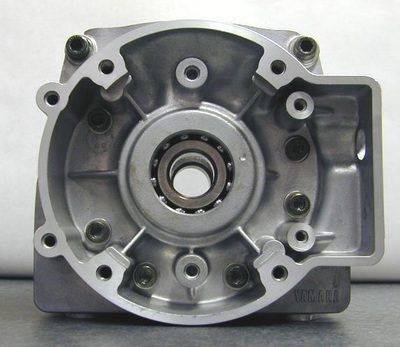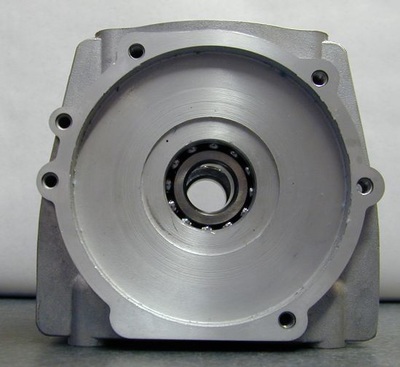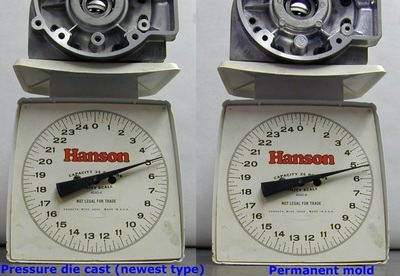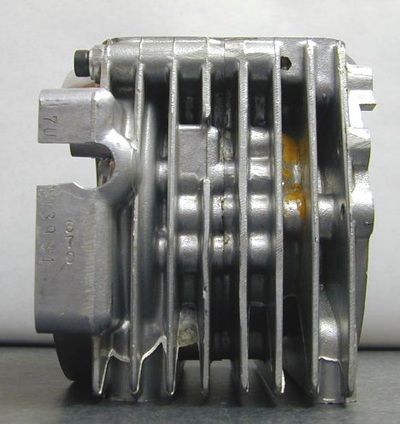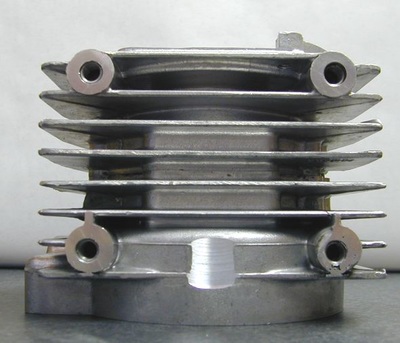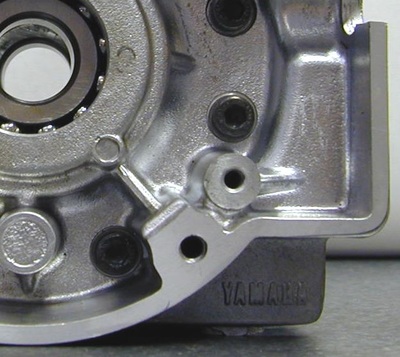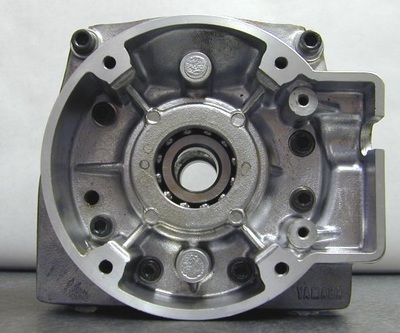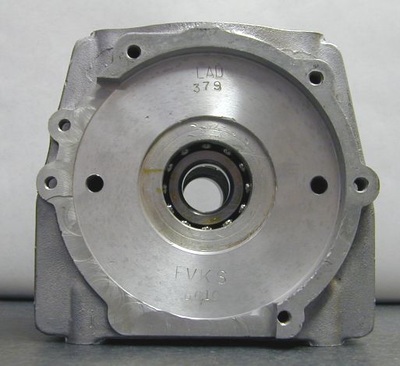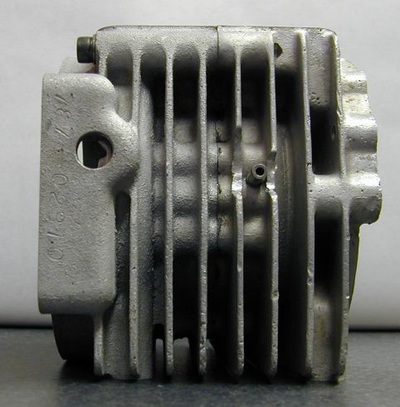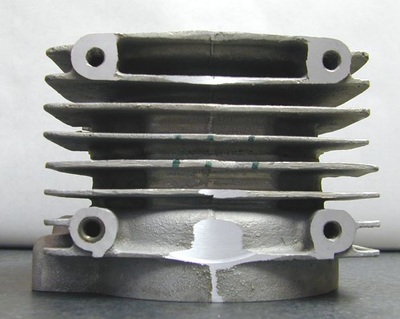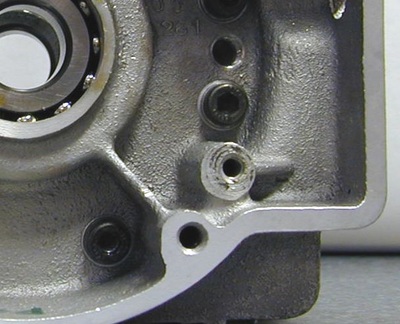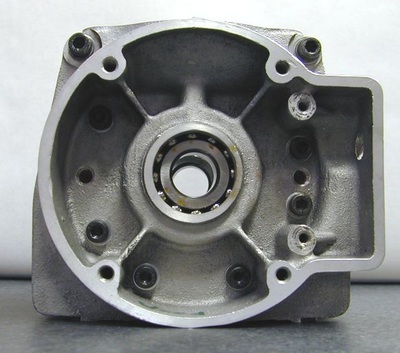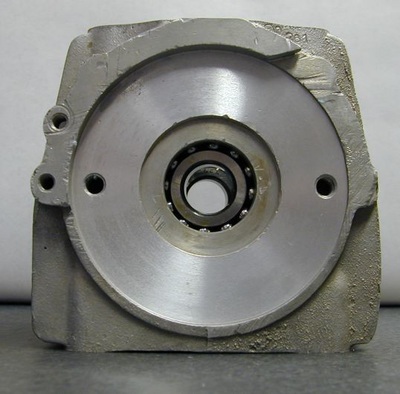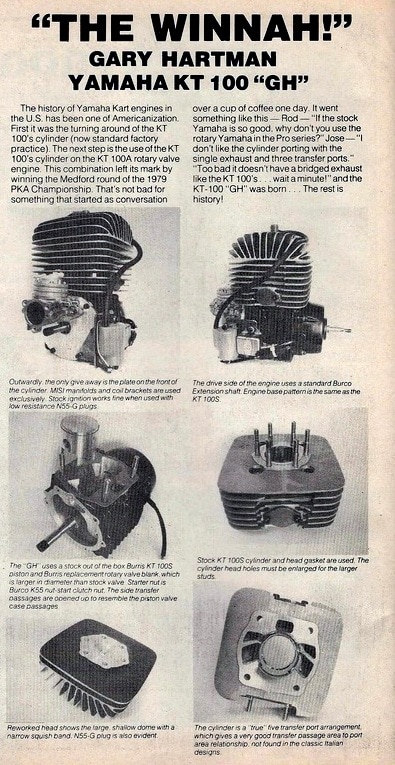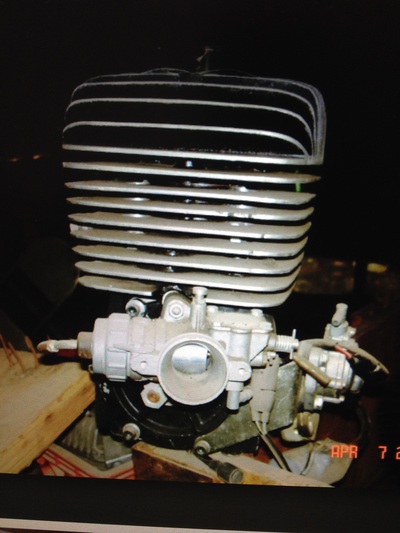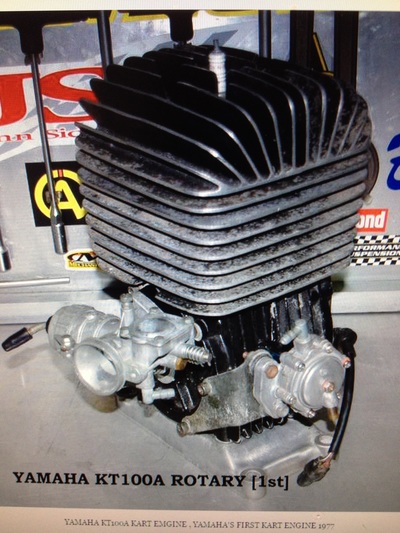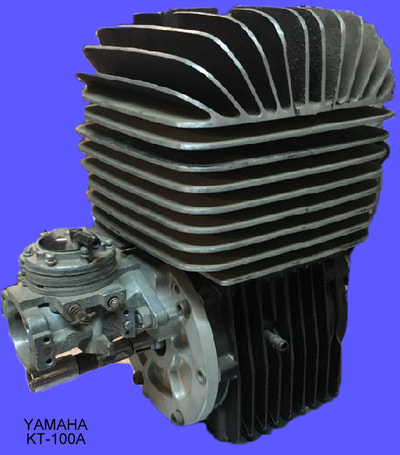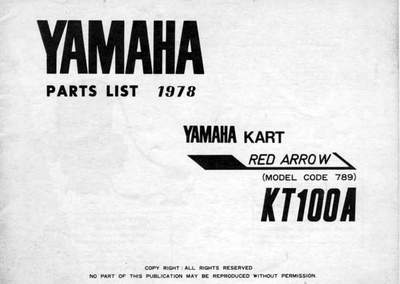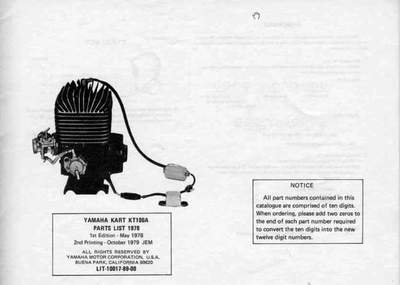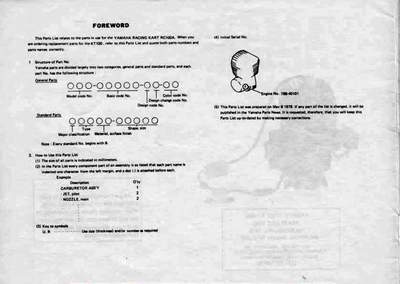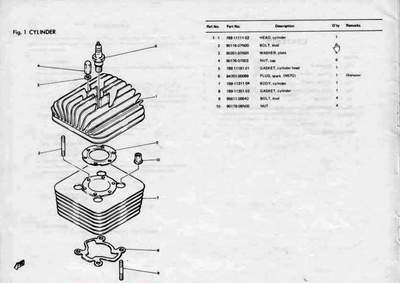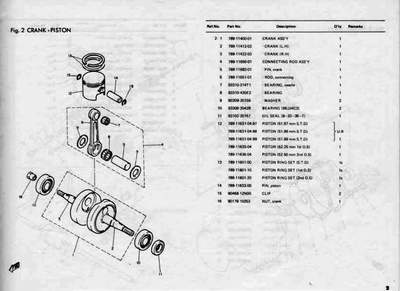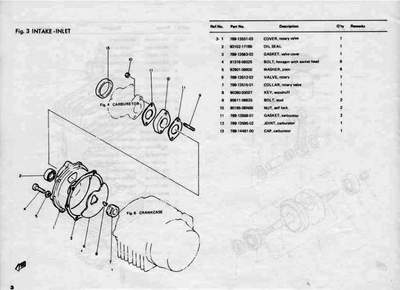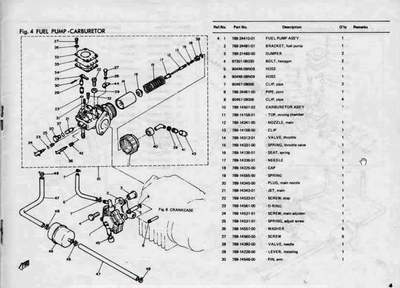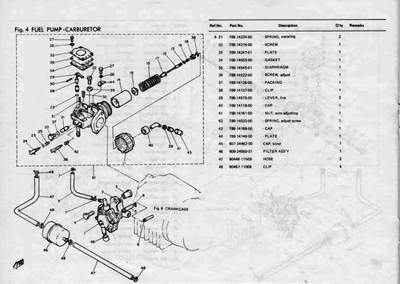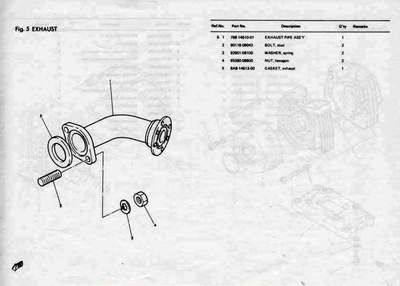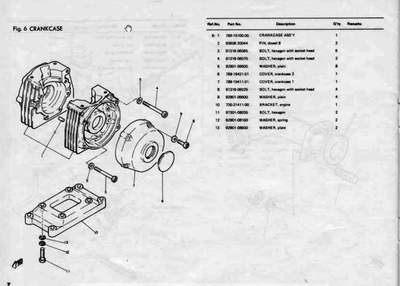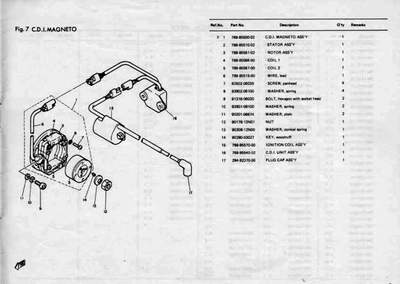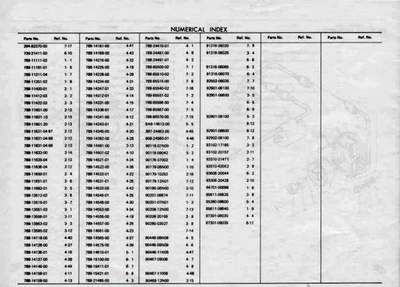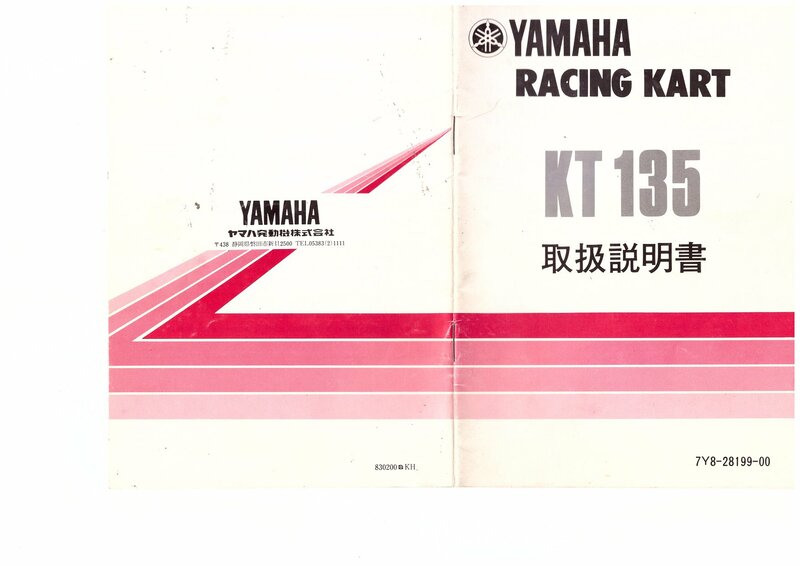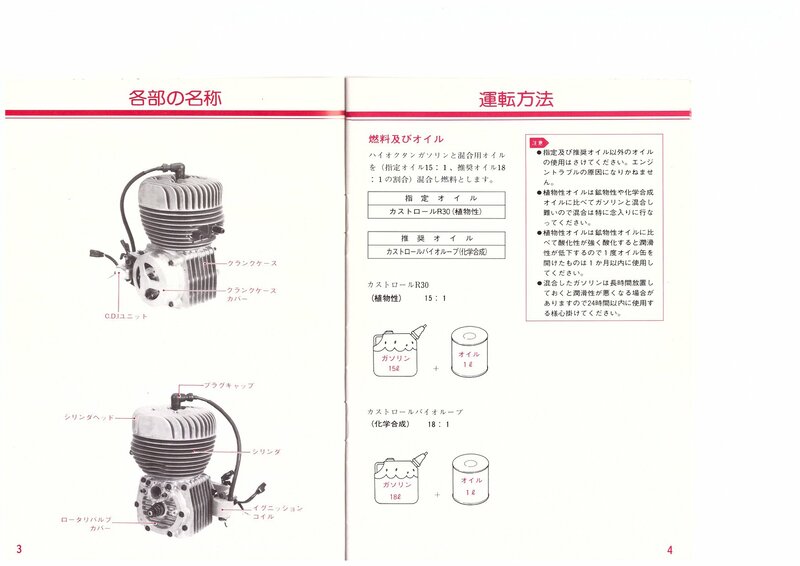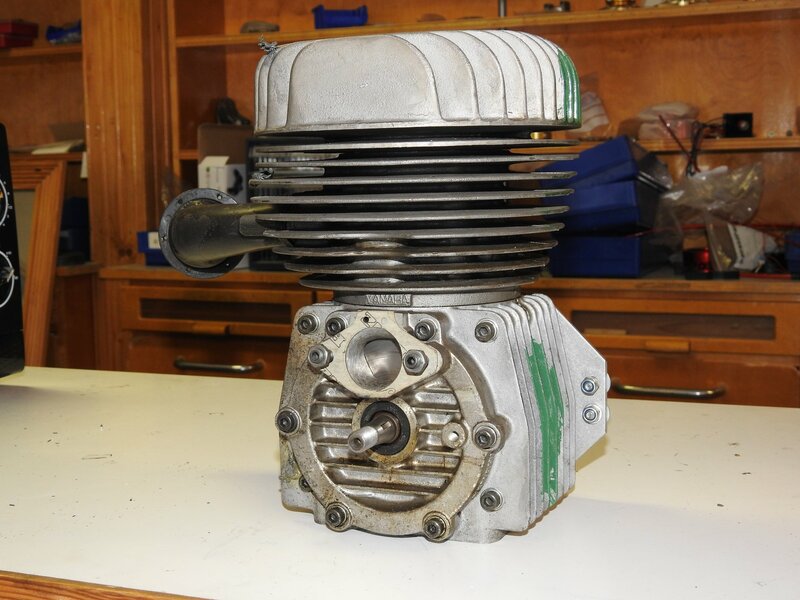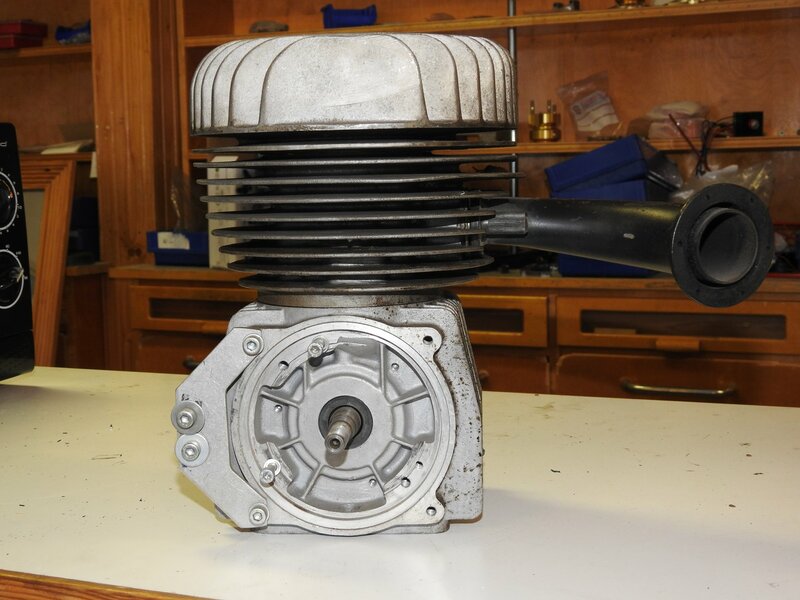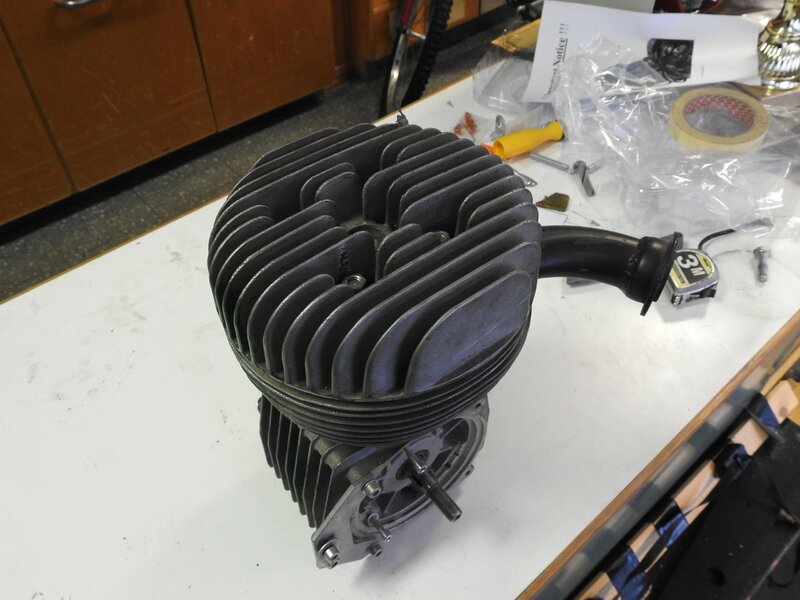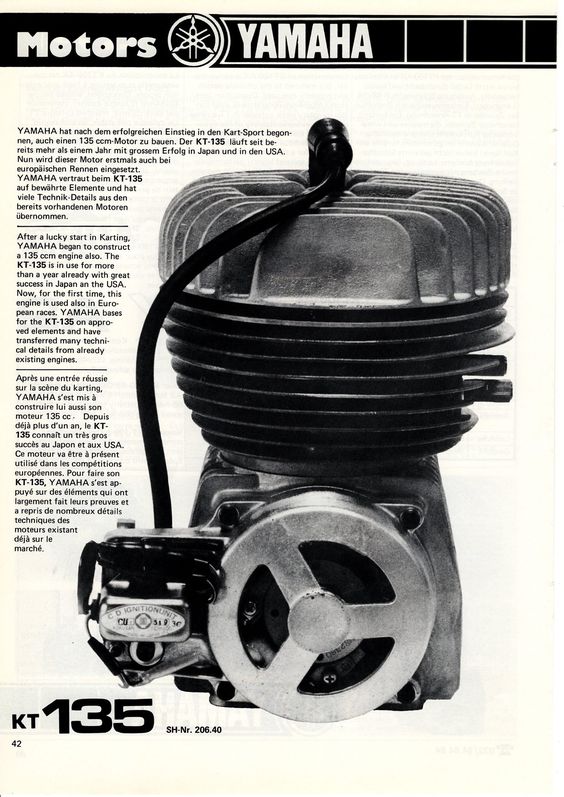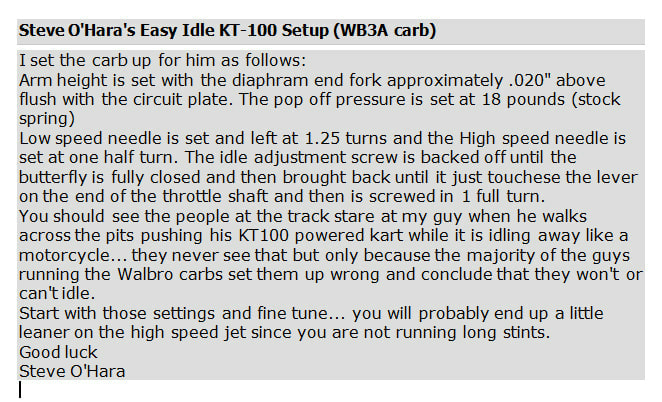YAMAHA KART ENGINES

YAMAHA KT100 CRANKCASE TYPES and SERIAL NUMBERS
This article is reproduced here courtesy of Pete Muller - MULLER MACHINE
People sometimes ask about the different types of crankcases on a Yamaha KT100 and the relationship to the serial numbers.
Yamaha has used 3 different methods of manufacturing cases during the life of the KT100 :
Generally speaking, the permanent mold cases are the best. The material in these cases is denser and quite a bit more stable than sand cast or pressure die cast. Certain pressure die cast cases can be very porous. Be very careful with pressure die cast cases. Simply stamping a name or number in the top of a case can be enough to permanently distort a case. They are very soft, regardless of how they might look or machine.
Make sure that the bottom of the cases are flat and that the top surface of your motor mount plate or adapter is also very flat. Bolting a case to something that is not flat can result in some fairly significant distortion.
Below, you will find a listing of the serial numbers that correspond to each type of case. Yamaha has sent cases to NZ with 3 different prefixes (787, 7U5, 7F6), and suffixes of either 5 or 6 digits. There may be cases around with other serial numbers such as "7MJ" prefix, but generally, the numbers listed below cover 99% of all the cases seen in NZ.
SAND CAST
787-02xxx and 787-03xxx
PERMANENT MOLD
787-04xxxx to 787-09xxx
787-100xxx to 787-103xxx
7F6-80xxx and 7F6-81xxx
7F6-080xxx, 7F6-081xxx
7F6-400xxx to 7F6-406xxx
7F6-500xxx
7U5-00xxx to 7U5-04xxx
7U5-050xxx to 7U5-056xxx
7U5-058xxx to 7U5-068xxx
7U5-100xxx
7U5-800xxx through 7U5-804xxx
PRESSURE DIE CAST
7U5-805xxx through 7U5-813xxx
7U5-440xxx onward
7U5-500xxx to 7U5-519xxx
7MJ-000xxx onward
YAMAHA KT100 CRANKCASE TYPES and SERIAL NUMBERS
This article is reproduced here courtesy of Pete Muller - MULLER MACHINE
People sometimes ask about the different types of crankcases on a Yamaha KT100 and the relationship to the serial numbers.
Yamaha has used 3 different methods of manufacturing cases during the life of the KT100 :
- Sand casting
- Permanent mold (aka: gravity cast permanent mold)
- Pressure die-casting
Generally speaking, the permanent mold cases are the best. The material in these cases is denser and quite a bit more stable than sand cast or pressure die cast. Certain pressure die cast cases can be very porous. Be very careful with pressure die cast cases. Simply stamping a name or number in the top of a case can be enough to permanently distort a case. They are very soft, regardless of how they might look or machine.
Make sure that the bottom of the cases are flat and that the top surface of your motor mount plate or adapter is also very flat. Bolting a case to something that is not flat can result in some fairly significant distortion.
Below, you will find a listing of the serial numbers that correspond to each type of case. Yamaha has sent cases to NZ with 3 different prefixes (787, 7U5, 7F6), and suffixes of either 5 or 6 digits. There may be cases around with other serial numbers such as "7MJ" prefix, but generally, the numbers listed below cover 99% of all the cases seen in NZ.
SAND CAST
787-02xxx and 787-03xxx
PERMANENT MOLD
787-04xxxx to 787-09xxx
787-100xxx to 787-103xxx
7F6-80xxx and 7F6-81xxx
7F6-080xxx, 7F6-081xxx
7F6-400xxx to 7F6-406xxx
7F6-500xxx
7U5-00xxx to 7U5-04xxx
7U5-050xxx to 7U5-056xxx
7U5-058xxx to 7U5-068xxx
7U5-100xxx
7U5-800xxx through 7U5-804xxx
PRESSURE DIE CAST
7U5-805xxx through 7U5-813xxx
7U5-440xxx onward
7U5-500xxx to 7U5-519xxx
7MJ-000xxx onward
YAMAHA KT 100S
Piston Valve
Piston Valve
YAMAHA KT 100A
Rotary Valve
Introduced in 1978
Rotary Valve
Introduced in 1978
YAMAHA KT135

